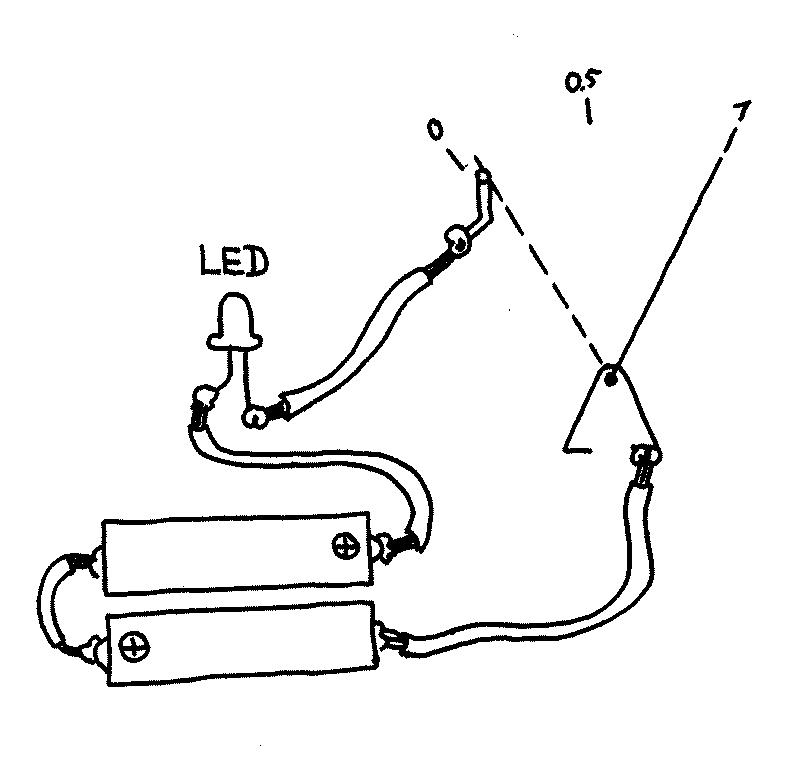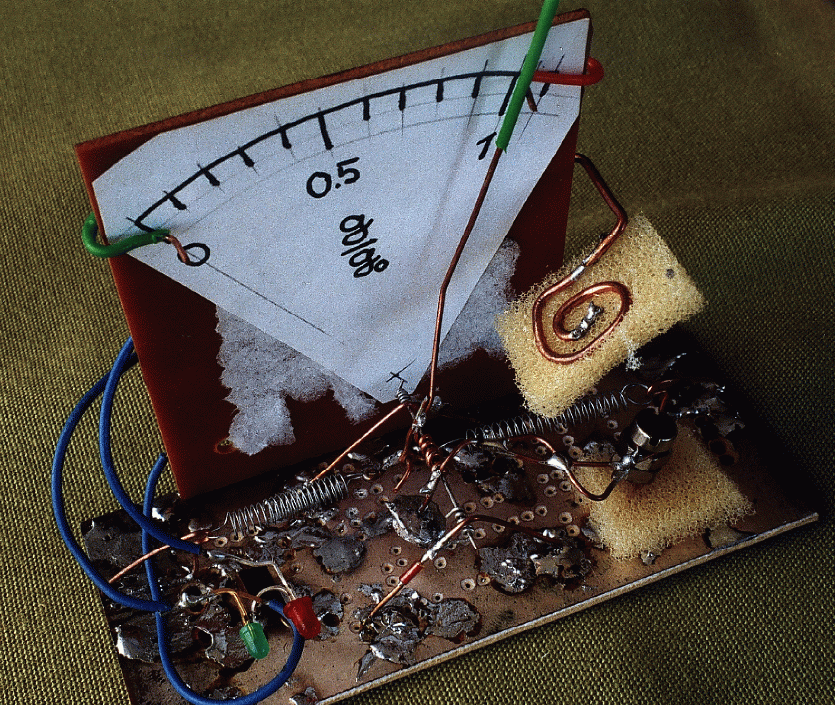
The Flimsy AcceleroMeter: Adding Visual Indication
Joachim Köppen DF3GJ Kiel/Strasbourg/Illkirch Winter 2004
Adding a visual indication
Since the pointer is made of metal and has electrical contact to the base plate, we can add a simple electrical circuit to give an optical indication whenever the acceleration becomes e.g. smaller than a certain value (say 0.05 g): We place a wire to the dial so that it will be hit by the pointer coming to that value. This contact wire is soldered in place by using as an insulating stand a high value resistor, a small capacitor, or an integrated circuit glued to the board in the `dead-bug' mode. The contact wire is connected via a LED (and perhaps a current limiting resistor of less than 100 Ohms) to one pole of a pair of 1.5 Volt batteries (AAA cells), the other pole is connected to the base plate. Check the proper polarity of the LED... When the acceleration drops below that value, the pointer makes the contact with the wire, and the LED lights up. Since the LED reacts very quickly, the occurrence of weightlessness is easily and quickly detected by the flashing LED.

And here in natura (the batteries are hidden behind the dial):

The green bit of plastic insulation at the pointer's tip is for transportation and storage only: it is to prevent the pointer making contact and thus draining the batteries when the device is not in use.
| Top of the Page | back to Main Page | back to my Home Page |